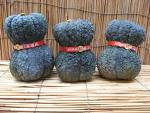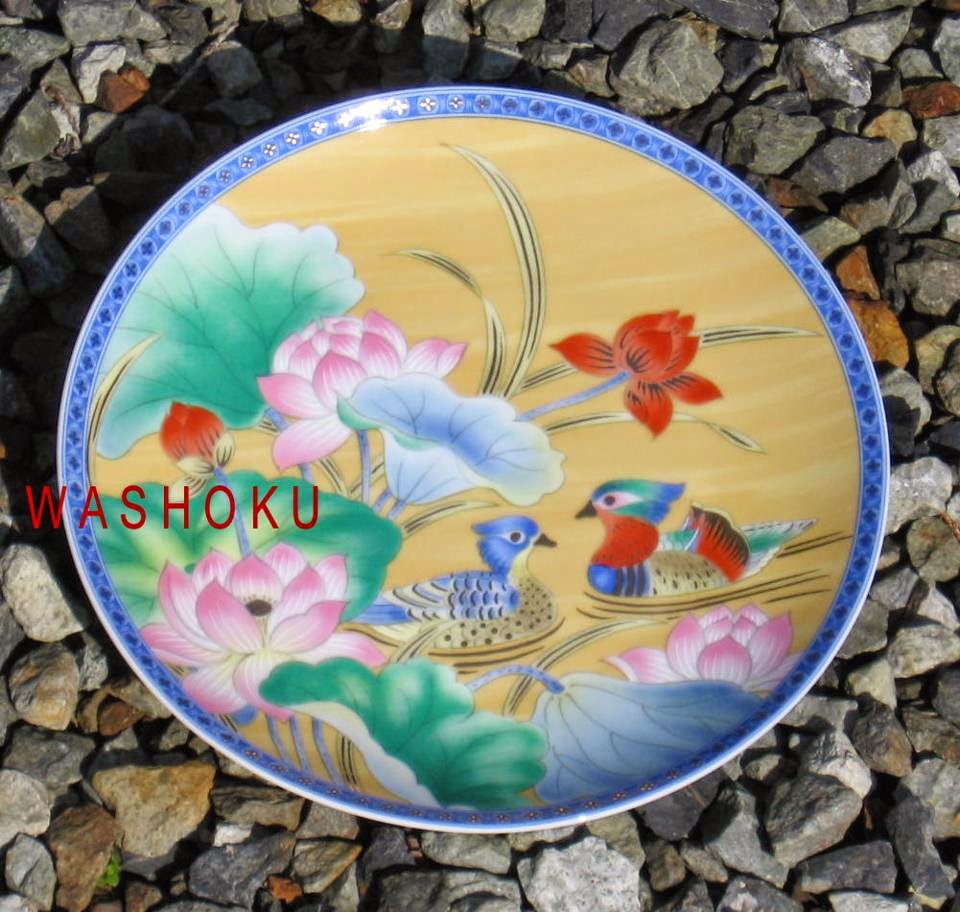::::::::::::::::::::::::::::::::::::::::::::::::::::::::::::::::::::::::::::::::::::::::::::::::::::
Shishigatani pumpkin (Shishigatani kabocha)
***** Location: Japan
***** Season: All Autumn
***** Category: Plant
*****************************
Explanation
Shishigatani, the Shishi Valley (Shishigatani 鹿ケ谷) in the Higashiyama area in the North of Kyoto.
Lit. "deer path valley”
Once a priest got lost in the large forest and was rescued by a deer that showed him the way back to his temple.
Shishigatani kabocha 鹿ヶ谷南瓜(カボチャ)pumpkins from Shishigatani
鹿ヶ谷かぼちゃ/ 「鹿ケ谷カボチャ
Curcurbita moschata, Toonas Makino
Hyootan Nankin, Hyoutan-nankin
Shishigatani nankin. Hyootan 瓢箪 is a gourd.
Kabocha is called OKABO オカボ in Kyoto dialect.
PHOTO : http://www.city.kyoto.jp/koho/eng/preview/53.html
This pumpkin is grown in the Sakyo area.
About 200 years ago, two farmers, Shohei and Matabei 庄兵衛 ,又兵衛, got some seeds from Tohoku from one Tamaya Tooshiroo 玉屋藤四郎, who visited Tsugaru, from a normal kikuza kabocha 菊座かぼちゃ pumpkin and planted it in the valley village of their home valley Shishigatani. For some reason, it formed into the gourd-shape it is now. With the advent of modern vegetables, it is now not grown in the area any more. Some farmers for traditional vegetables in Kyoto still grow it around Kyoto, mostly in Ayabe 綾部.

When it grows older, the color changes from green to orange-brown. The outside is full of bumps.
It is also used as a decoration, because of its shape and many painters use it as a model. Some say it is a medicine to prevent polio in mid-summer. It contains a lot of linolen acid.
 If you cut it in half, you can use both the indents to fill with two different kinds of gratin and use the whole as a pot for your food.
If you cut it in half, you can use both the indents to fill with two different kinds of gratin and use the whole as a pot for your food.It tasts not so sweet and has the texture of a sweet potato.
:::::::::::::::::::::::::::::::::::::::::::::::::::::::::::::::::::::::::::::::::::::::::::::::::::::
Shishigatani Kabocha Kuyoo 鹿ヶ谷かぼちゃ供養
Memorial ritual for the pumpkin
At the temple Anraku-Ji 安楽寺 there is a "memorial service" for the Shishigatani Pumpkin, which is cooked there and then eaten by the visitors to stay healthy for the rest of the Year. (July 25). This ritual began about 200 years ago, when the priest Ekizui Shonin 真空益随(えきずい)上人 heared that this pumpkin will help to prevent palsy and strenghten the health of the poor.
The temple is most beautiful in autumn with many red leaves.
. . . CLICK here for Photos !
Temple Anrakuji
京都市左京区鹿ケ谷御所ノ段町21
:::::::::::::::::::::::::::::::::::::::::::::::::::::::::::::::::::::::::::::::::::::::::::::::::::
Plate from the kiln 松斎窯作, Kyoto
Kiyomizu Pottery 清水焼
. . . CLICK here for Photos !
:::::::::::::::::::::::::::::::::::::::::::::::::::::::::::::::::::::::::::::::::::::::::::::::::::::
Now we make a time slip in the valley,
to an old story told forever in a Noh performance.
quote
The Shishigatani Incident (鹿ケ谷事件, Shishigatani jiken) of June 1177 was a failed uprising against the rule of regent Taira no Kiyomori 平清盛 in Japan. The conspiracy was discovered, and its perpetrators arrested and punished before any part of their plan was put into action.
The incident is also known in Japanese as Shishigatani no Inbō (鹿ケ谷の陰謀), the Shishigatani Conspiracy or Plot. The name comes from the location where the conspirators met, a mountain villa belonging to Jōken Hōin, in the Shishi Valley (Shishigatani) in the Higashiyama area of Kyoto.
This is the most famous of a number of conspiracies and uprisings against Kiyomori. He rose quickly to power in the 1160s and dominated rather than guided the Imperial Court, taking advantage of his position to install members of his own family into high court positions, and marrying them into the Imperial family. In a number of ways, and on a number of occasions, he offended and opposed the cloistered Emperor Go-Shirakawa and the Fujiwara family of court nobles and regents.
Thus, Fujiwara no Narichika, his son Fujiwara no Naritsune, Saikō (religious name of Fujiwara no Moromitsu), Taira no Yasuyori (Hei-Hogan, or Taira police lieutenant), Tada no Kurando Yukitsuna (a Genji from Settsu province), and the monk Shunkan 俊寛 gathered, along with others, in a small country villa in Shishigatani, to conspire against Kiyomori and the Taira clan as a whole.
Tada Yukitsuna, however, was in fact a spy for Kiyomori, and reported the conspiracy to his lord. Saikō, a monk, was tortured and then executed, angering monastic groups already opposed to his considerable secular authority. Shunkan, Yasuyori, and Naritsune were exiled to a remote island south of Kyūshū called "Kikai Island", which has been identified with at least three different islands. Kiyomori then rebuked Emperor Go-Shirakawa, who had been aware of the plot, seized a number of mansions belonging to the Fujiwara, and dismissed a number of officials from office, including Regent Fujiwara no Motofusa. He then filled the vacated Court positions with members of his own family.
The events, and their consequences, are related in the classical epic Heike monogatari, and in a number of derivative works such as the Noh play Shunkan and the jōruri (puppet theater) production Heike Nyogo-ga-Shima which concern themselves with the exiles on Kikai-ga-shima.
© More in the WIKIPEDIA !
:::::::::::::::::::::::::::::::::::::::::::::::::::::::::::::::::::::::::::::::::::::::::::::::::::::
Shishigatani Daruma Kabocha
だるまかぼちゃ

source : boumama735
*****************************
Worldwide use
*****************************
Things found on the way
Daruma Pumpkins かぼちゃ達磨 Kabocha Daruma
*****************************
HAIKU and SENRYU
灰撒いてある鹿ヶ谷南瓜かな
hai maite aru Shishigatani nankin kana
ashes sprinkled
around the pumpkins from
Shishigatani
Nakajima Yooka 中島陽華
:::::::::::::::::::::::::::::::::::::::::::::::::::::::::::::::::::::::::::::::::::::::::::::::::::::

鹿ヶ谷のよしある荘の初句会
Shishigatani no yoshi aru soo no hatsu kukai
in a fine villa
in the Shishigatani valley -
first haiku meeting of the year
Oohashi Etsu-ooshi 大橋越央子
::::::::::::::::::::::::::::::::::::::::::::::::::::::::::::::::::::::::::::::::::::::::::::::::::::
he looks just
like my dear friend Daruma -
Shishigatani pumpkin
Gabi Greve, September 2009
*****************************
Related words
***** MORE
Traditional vegetables of Kyoto 京野菜 Kyoo yasai
***** Kabocha 南瓜 (かぼちゃ) pumpkin, squash
***** . WASHOKU
Vegetable SAIJIKI
:::::::::::::::::::::::::::::::::::::::::::::::::::::::::::::::::::::::::::::::::::::::::::::::::::




10 comments:
"He does bear a certain resemblance. LOL"
M. on facebook
"oh, gabi-sama, i have a coconut that is all rough and red and blackened (like an etcher i rub on the black last and then rub it off the surfaces) that would be even more the very daruma you want -- yes even better than the shishigatani pumpkin -- but lacking a digital camera . . . poverty makes it so hard to share!
By the way, Tawara Machi has her hakusai sexy in their red obi poem that can be pictured and paired with yours! Why not try it, paired poems?"
Robin
a boor
wizened, wearing the red belt -
pumpkins
Vielleicht gibt es Parallelen zum 9. Dan - 10. Dan = roter Gürtel
;-)) und gewissen Eigenschaften zur engl. Bezeichnung "boor", die nicht nur mit Bauer uebersetzt wird, sondern auch "Stoffel".
"...
would cover some of the most characteristic elements of a boor."
;-)) happy Halloween!
Heike
Thanks for checking in, Heike !
Well, the red sash ... could be an indication for more to come !
Gabi
It is called the gramma here in Australia. It makes an excellent sweet pie.
Luckily I know no-one who looks like a gramma, but I can imaging that someone could.
I like the gentle humour. The pumpkin may be ugly but it gives life and that is a fair trade.
Enjoyed, J.
sometimes the simple ones can be charming. Good kigo.
J.
Now that would put me off my pie.
Love the humour in this too. Lovely heart in there too.
T.
Yes, Gabi. I'm not sure about the pumpkin, but the haiku is very appealing.
J.
hehehe, great fun, Gabi san!
M.
Echo the enjoyment of the humor and the affection that you bring in with the simple word "dear".....enjoyed. Thank you.
WD
Post a Comment